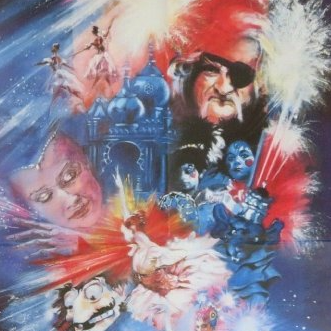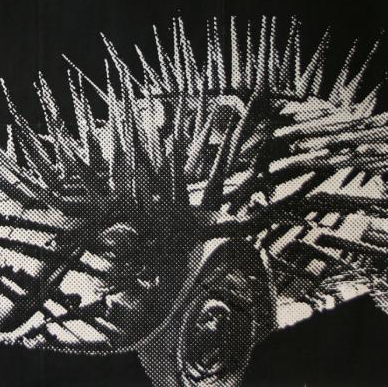Thursday's Child
For twelve years now, you have been asking "who is Thursday's Child?" (etc.)

UK poster | Pathé Pictures International
1943 — UK
An ASSOCIATED BRITISH PICTURE CORPORATION presentation
Cast: SALLY ANN HOWES and WILFRED LAWSON, with KATHLEEN O'REGAN, EILEEN BENNETT, STEWART GRANGER and MARIANNE DAVIS
Directed and Written by: RODNEY ACKLAND
Producer: JOHN ARGYLE
Original work by: DONALD MACARDLE
Editor: FLORA NEWTON
Cinematography: DESMOND DICKENSON
Art direction: CHARLES GILBERT
Music: CHARLES WILLIAMS
© [StudioCanal Films]
No trailer for this one, but have this clip used to promote the DVD release.
Thursday’s Child feels like kind of an oddity for the time period. In reality, it’s probably not so much, but considering its release at the height of the war, it nonetheless feels strange to see a contemporary set drama that on the one hand doesn’t obfuscate that its wartime but on the other keeps it at a distance. It doesn’t seem to have either particularly propagandistic or escapist aims compared to a lot of its contemporaries (the ones that have endured, at any rate); instead being happy to just sort of portray a more general suburban middle-class sort of existence in the early ‘40s. It’s also yet another film I’m writing about that had a troubled production. Yay!
Sally Ann Howes plays Joan Fennis Wilson (the explanation that Fennis is her middle name and she favours it as a youthful affectation only being in the original release version of the film). She’s just a girl in this world which is at war, a fact that is mercifully and rather surprisingly given the film’s vintage kept on the sidelines. She lives a fairly ordinary lower middle-class existence in a fairly ordinary middle-class family. Her older sister Phoebe (Eileen Bennett) has had lots of dreams, presently wanting to be in the pictures quite desperately. Their father (Wilfrid Lawson) does not approve. She manages to blag an interview with the casting director at Elstree Studios and drags her sister along as an excuse; the lie is that she’s been invited on a tour of the studio and she can’t very well bring along too many people, with the idea that that’ll stop their mother from insisting on coming with. While Phoebe’s trying to schmooze, Fennis gets noticed. A director decides he wants to test her to play a small part (the younger version of an actress she apparently sort of resembles). She aces the screen test, but the studio has bigger ideas for her, instead wanting her to play a major part in another film they’ve got in the pipeline. She doesn’t particularly want to be an actress, having instead other plans for her life, but they are willing to pay £50 a week. The powder keg is lit; how precarious the family’s happiness is will soon become apparent to them all.
There are two cuts of this film; the original 1943 cut and a slightly abbreviated cut for a re-release in 1946-ish. Ordinarily I’d just establish which one I’m talking about for the purposes of writing, but as the differences aren’t really documented online, I figured I’d check out both for comparison. It’s not like it’s a particularly long film to begin with, with the ’43 version being all of about 82 minutes. There's about three-and-a-half minutes difference in total. It’s actually not all that interesting, as for the most part this is in the form of random snippets from the beginning or end of shots that are ultimately difficult to notice. The biggest cuts are a bit of exposition from the opening scenes that help explain some character stuff a little, and is very awkwardly edited around. I'm guessing it's because it has some mild war effort-y stuff that no longer seemed relevant, but as there's still enough stuff about the wartime setting in the film, one wonders why they bothered. A particular casualty is the heroine's brother who has enough of his meagre sub-plot cut out that you wouldn't know there was one to begin with if it weren't for the conclusion to it still being in there for some reason. I suppose it would’ve been too difficult to edit him out entirely, but it’s cumbersomely done. Similarly, while the explanation for the Joan vs Fennis thing is cut, the payoff is kept (it’s a fairly mild spoiler, but she reverts to ‘Joan’ in the denouement, and it’s emblematic of her maturing or whatever), despite not really establishing what it’s paying off. Also for some reason, the later version awkwardly reworks a montage covering the production of the film around the midpoint of the film into a newsreel discussing not-ABPC’s big new child star,* which explains a lot of stuff that you'd either know anyway if you were paying attention or that don't seem particularly important in the scheme of things. The original cut is probably preferable overall, but you're not missing too much if you only see one; it seems like StudioCanal's only made an HD transfer of the later print for some reason, so I'd imagine that's the one most places have.
Despite the film getting characterised by the BFI as “a vitriolic attack on the [film] industry’s exploitation of young women”, who go on to proclaim that “[Ackland’s] disdain for the hand that fed him is palpable in this entertaining exposé”, it feels like they’re over-egging the pudding somewhat. Not that those aren’t elements of the film; a sizable chunk of the first two acts focus both on Fennis’ attempts to remain true to herself in the face of the studio’s attempts to mould her and on her sister’s often unglamourous struggles to crack into the industry, but the film’s core is in the domestic drama that comes to a head in the final act. This seems to be the film’s downfall in the eyes of many; a lot of reviews deeming the shift from industry satire to family melodrama to be jarring. I’m not wholly sure that I agree. A lot of the seeds for this shift are actually planted in the first act (perhaps a bit more in the original cut, as the scenes with the brother are the first that serve to suggest that things within the family are perhaps not as happy as they’re trying to project), and their payoff is surprisingly pleasing from a modern perspective, considering when the film was made.
I mentioned the film’s troubled production. The post-war recutting wasn’t part of that, no, no. This was Rodney Ackland’s sole film as director; a weirdo on IMDB, referring to Ackland’s 1954 memoirs, posits that it went over-budget and over-schedule so badly that Associated British pulled the plug on production with some key scenes left unshot and demanded something workable be made out of what they had. I found the text of Ackland’s memoirs however, and IMDB guy is very much overstating what happened, at least as the man himself put it. What didn’t make the film in the end was some shots from the montage, he claims, not because they weren’t shot, but because they failed to make it to the lab due to human error. When this was discovered, ABPC weren’t willing to put forth the money to develop more film, having seemingly decided that the film wasn’t worth it; the distribution arm hated it, presumably related to the industry satire element, and were unwilling to give it a West End premiere or a press screening or any of that. I did think that this allegation might explain the film’s rather unusual climax, wherein few of the issues are actually resolved beyond in abstract; the family unit is exploded, it seems unlikely that it’ll be able to reconstitute itself to any satisfactory degree; and you know what, that’s all right. Evidently however, this wasn’t really an accident on the film’s part. Sometimes things don’t work out neatly and sometimes it’s better to know when to call it quits. It leaves these threads regarding the changed relationships between the characters hanging, and perhaps stumbles into something that feels more real, more memorable as a result, acting as a contrast to the hackneyed melodrama of the film-within-the-film whose production we’re witness to.
* While ABPC were evidently willing to produce a film that acts as an indictment of the industry’s treatment of people; women, in particular; it seems they drew the line at suggesting that they’d do such things, so Elstree’s instead home to a fictional production company, ‘Marathon’. I expect people could probably have read between the lines, mind you; by the late ‘30s, British studios were very specific as to where their stages were, and Elstree was pretty much just ABPC at that point. British National Films also set up shop in the area just before the war, but the government commandeered pretty much all the studios at Elstree (and also Pinewood) during the war, so it wasn’t really established the ‘BNF = Elstree’ before they had to start using other facilities. Incidentally, despite being nominally set at Elstree, this film was actually made at ABPC’s overflow facilities in Welwyn Garden City.
At time of writing, Thursday's Child is available to rent off of Amazon and the BFI Player. I recommend JustWatch for keeping up with where films are streaming (including this one!). Alternatively, physical copies are reportedly available for rent via Cinema Paradiso.
The film presently has a PG rating (last rated 2015), the BBFC citing “scenes of domestic conflict”. In case you were wondering, it was originally rated U in the '40s.
Sources
Ackland, R. and Grant, E., 1954. The Celluloid Mistress, or the Custard Pie of Dr. Caligari. London: Allan Wingate. [Online] Available at: <https://archive.org/details/in.ernet.dli.2015.525126> [Accessed 2 March 2021].
BFI. Thursday's Child. [online] Available at: <https://www2.bfi.org.uk/films-tv-people/4ce2b6b8662ca> [Accessed 3 March 2021].



